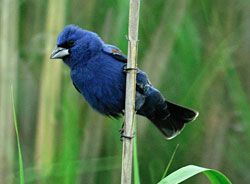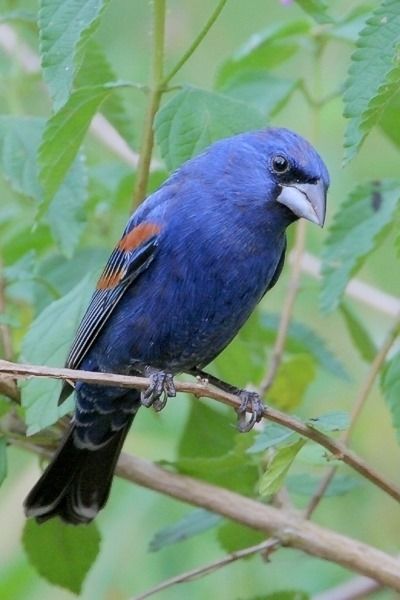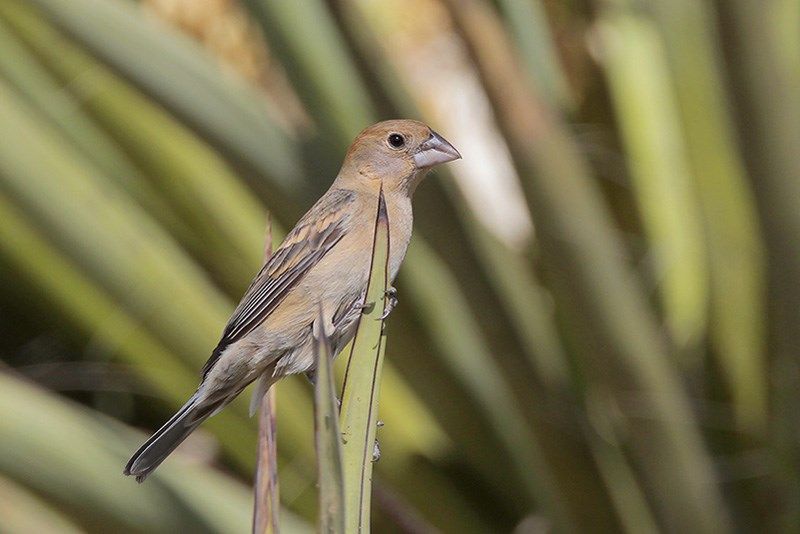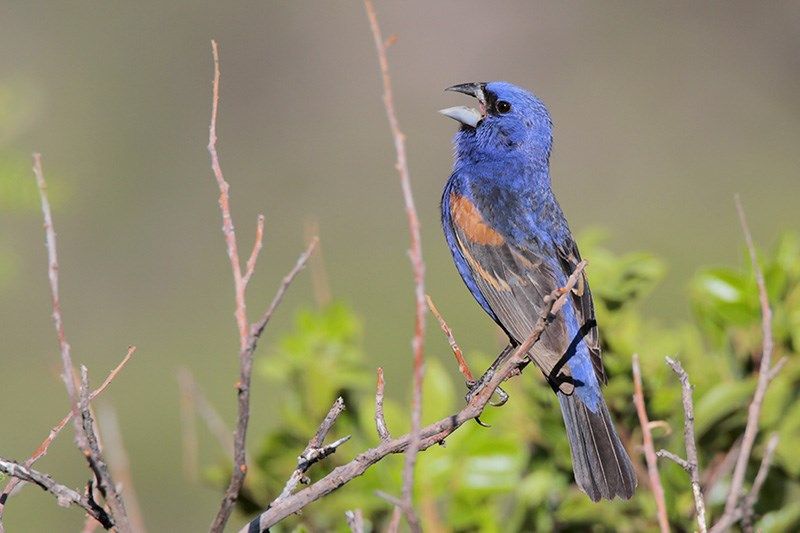Blue Grosbeak

© Joseph Kennedy
Passerina caerulea
Family: (Cardinalidae) Cardinals and Allies
Preferred Habitat: Woodlands, hedgerows
Seasonal Occurrence: Common in spring and fall; lesser numbers in summer.

© Greg Lavaty
Profile by Bryce Loschen: Blue Grosbeaks are richly colored songbirds of open weedy fields across the southern United States. Males are a deep vivid blue with chestnut wingbars. Females are cinnamon-brown above with brown wingbars and bluish tails. Compared to the similar looking Indigo Bunting, Blue Grosbeaks are larger with much larger bills. Male Indigo Buntings also lack the Grosbeak’s brown wingbars. Female and immature Indigo Buntings have lighter underparts than Blue Grosbeaks and have faint streaking which the Grosbeaks lack. Male Blue Grosbeaks sing a rich, short warbling song from tall, exposed perches on the breeding territory.
Look for Blue Grosbeaks in areas of dense vine and shrub habitat in semi-open country such as woodland edges and brushy fields. Blue Grosbeaks eat a wide variety of insects and seeds. They feed on the ground or in low vegetation picking bugs and seeds off the ground or off plants, and will also sometimes take short flights to catch insects out of the air. Male Blue Grosbeaks will defend a breeding territory ranging from 2-20 acres in size. Nests are built low in small trees or shrubs. Pairs sometimes raise two broods of chicks in a breeding season especially in the southern areas of the breeding range.
Blue Grosbeaks are migratory, breeding throughout the southern United States and wintering in Mexico, and Central America as far down as Panama. Blue Grosbeaks breed throughout most of Texas, so listen for males singing in appropriate open weedy habitats.

© Greg Lavaty, www.texastargetbirds.com

© Greg Lavaty, www.texastargetbirds.com

© Greg Lavaty, www.texastargetbirds.com




















